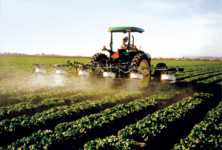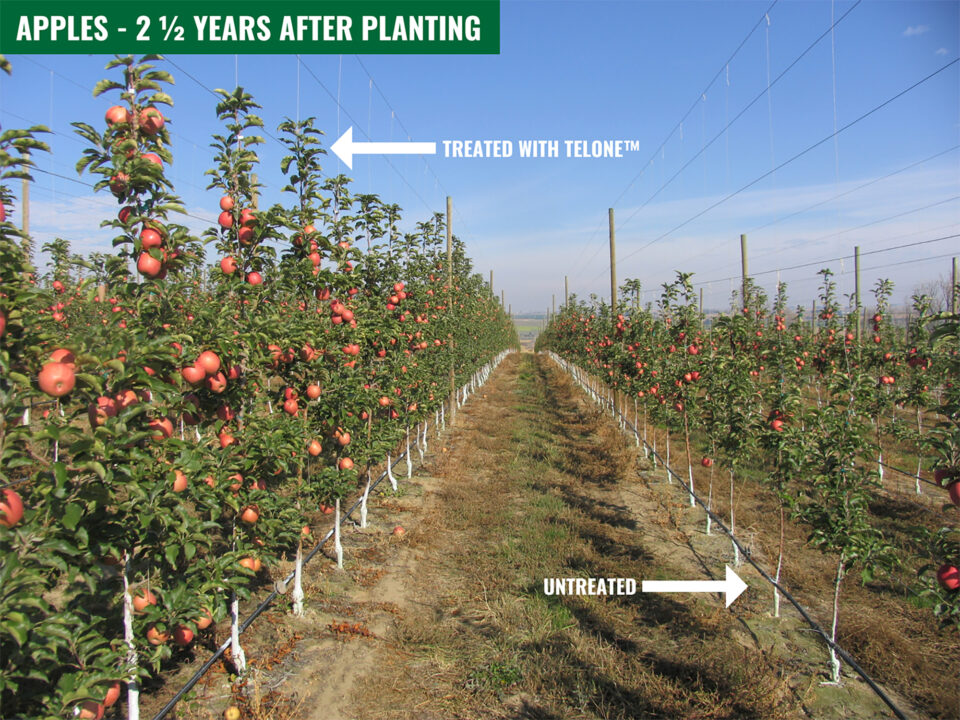The Droplet Debate

What’s the difference between large droplet and small droplet crop protection spray coverage? It depends on the crop and the way it is sprayed.
Robert Wolf, an associate professor and Extension specialist of application technology at Kansas State University, argues that while small droplets can give better coverage on plants, it doesn’t necessarily mean it will always happen.
“I don’t always agree that small droplets are better,” he says. “You have to be able to draw a magic line between where coverage and drift are separated. In my 20 years of research on nozzles and their ability to reduce drift, we have not always had efficacy in mind. Field research is necessary to evaluate where nozzles can be used to spray effectively and reduce drift.”
- Fundmentals of good spray control
Mark Ledebuhr of Ledebuhr Industries in Williamston, MI, the manufacturer of Proptec air assisted rotary atomizers, says the only way to get coverage inside the plant canopy is with small droplets.
“The modern way of thinking is drift reduction but did you actually do a better job reducing drift if you have to spray more because you didn’t get good coverage with large droplets?” he asks. “Go out into a pea soup fog and you’re wet everywhere; run through a sprinkler and the only side of you that gets wet is the side of you that went through the sprinkler. That’s the difference between small and large droplet coverage.”
Ledebuhr says the problem with achieving “average coverage” is “you just kill dead bugs more dead.” He adds that typical coverage is often 3% to 4% in the weakest areas of the plant, which means higher, wasted coverage on the rest of the plant.
“I want growers to focus on that least covered area,” Ledebuhr says. “Say you were getting 3% control in the least covered area. If you could increase that to 10%, you could reduce chemical use by two-thirds and still get that same dose of chemical in that least covered area. If you can reduce your usage and still get better coverage, that’s ideal.”
Air Assistance Technology
Both Ledebuhr and Wolf agree that air-assist sprayers help growers get better coverage with small droplets. While the technology is not new to the market, many growers think of it as new because most pesticides are not labeled for use with air assist sprayers, plus they cost more money up front than traditional boom sprayers, Ledebuhr says. After 14 years on the market, air assist sprayers are becoming more widely embraced and supported. EPA is working on new chemistry labels to include drift reduction technology (DRT), which should allow growers to use air assist sprayers, according to Wolf.
Air assistance is a technology that blows small spray droplets into the canopy of a plant with a fan. The air moves the canopy around and penetrates it to get small droplets to the base of the plant. According to Wolf, with air assistance, the sprayer covers both sides of the leaf with droplets.
“Throw a feather and throw a rock — the weight of the droplet has everything to do with its ability to get to the target,” he says. “Small droplets could evaporate or end up in the neighbor’s crop before they get to the target. That’s why air assist helps — it penetrates the plant’s canopy for better coverage with small droplets.”
There are several types of air-assist sprayers on the market, including air booms, air atomizing sprayers, electrostatic sprayers, and air assisted rotary atomizers. Ledebuhr explains how each type of sprayer works.
“Air booms use more traditional nozzles, and the spray is forced into the canopy with an intersecting airstream. With air atomizing sprayers, pressurized air mixes with spray in a chamber inside the nozzle. Turbulence at exit creates fine droplets.”
“Electrostatic sprayers,” he continues, “have air atomizing nozzles with a charging electrode at the exit. Air assisted rotary atomizers have a spinning cage or cup that makes spray by centripetal force. Droplet size is based on speed, not flow rate. Very high volume, highly turbulent air is generated by an axial fan that is attached to the atomizer.”
Choosing A Sprayer
Ledebuhr says growers need to make sure air assist sprayers will help them stay within the law as it applies to chemical application.
“Growers want to maximize field time and if they can only spray at 100 acres to a gallon, they only have a 5-acre fill and that’s a lot of time lost,” he says. “A poorly applied spray timed well will always do better than a well applied spray timed poorly. Growers should focus on getting the maximum good out of their time in the field. The amount of air your sprayer has determines how fast you can drive. The more air you have, the faster you can drive.”
All of the available air assist sprayers on the market are expensive, Ledebuhr says. Proptec, for example, costs between $40,000 to $70,000. But compare that to the cost of chemicals and the savings growers could realize, and an air assist sprayer could pay for itself quickly, he says. In addition, applying lower chemical rates can increase packout, as in one example he gives of a pickle grower who increased packout by 3,000 pounds per acre just by changing his sprayer.
“A grower might be putting $100,000 to $150,000 worth of chemicals out; what if you could save 30%?” Ledeburgh says. “I always recommend minimum rates because they also give better coverage. What if you could get a sprayer that would save two-thirds of your chemicals and give you a higher pack rate? Growers need to start thinking in dollars and cents about what a sprayer is worth to them. Usually sprayers are the cheapest equipment growers buy.”
When choosing an air assist sprayer, Ledeburgh recommends growers evaluate their situation, considering important factors like the crops they grow and their canopy characteristics, and field capacity requirements. Consider customer requirements and limitations, willingness to do preventive maintenance, and comfort with technology.
“Do not be afraid to ask questions in advance,” he advises. “Do your homework! There is a mountain of research on the Web.
“Ask the manufacturer to provide you with proof, and to review your needs thoroughly with your dealer before you buy,” he continues. “With adequate acreage, a well-chosen sprayer will pay for itself in savings in two to three years in most situations, when you take into account the reduced labor, reduced depreciation by reducing the number of sprayers required, reduced chemical and fertilizer inputs, and increased packouts.”










